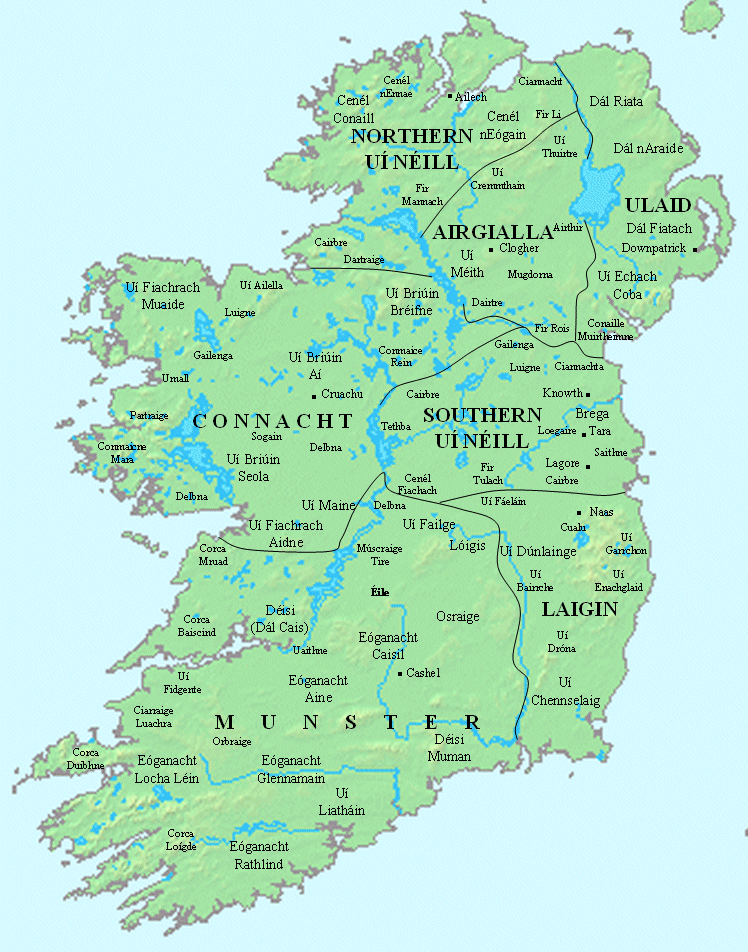Síol Anmchadha on:
[Wikipedia]
[Google]
[Amazon]
 Síol Anmchadha () was a sub-kingdom or lordship of Uí Maine, and ruled by an offshoot of the Uí Maine called the Síol Anmchadha (''"the seed of Anmchadh"''), from whom the territory took its name. It was located in
Síol Anmchadha () was a sub-kingdom or lordship of Uí Maine, and ruled by an offshoot of the Uí Maine called the Síol Anmchadha (''"the seed of Anmchadh"''), from whom the territory took its name. It was located in
 Síol Anmchadha () was a sub-kingdom or lordship of Uí Maine, and ruled by an offshoot of the Uí Maine called the Síol Anmchadha (''"the seed of Anmchadh"''), from whom the territory took its name. It was located in
Síol Anmchadha () was a sub-kingdom or lordship of Uí Maine, and ruled by an offshoot of the Uí Maine called the Síol Anmchadha (''"the seed of Anmchadh"''), from whom the territory took its name. It was located in Connacht
Connacht or Connaught ( ; or ), is the smallest of the four provinces of Ireland, situated in the west of Ireland. Until the ninth century it consisted of several independent major Gaelic kingdoms (Uí Fiachrach, Uí Briúin, Uí Maine, C ...
, Ireland.
History
At its largest extent, the Kings of Síol Anmchadha ruled all the land on the west shore ofLough Derg (Shannon)
Lough Derg, historically Lough Dergart (), is a freshwater lake in the Shannon River Basin, Ireland. It is the third-biggest on the island of Ireland (after Lough Neagh and Lough Corrib) and the second largest lake in the Republic of Ireland ...
as far south as Thomond; the land between the Shannon and Suck rivers; and a corridor of land, known as Lusmagh, across the Shannon in Munster
Munster ( or ) is the largest of the four provinces of Ireland, located in the south west of the island. In early Ireland, the Kingdom of Munster was one of the kingdoms of Gaelic Ireland ruled by a "king of over-kings" (). Following the Nor ...
, in the direction of Birr. It was centred around the barony of Longford.
The ruling dynasty later took the surname Ó Madadháin, anglicised as Maddan or Madden. In the later medieval era, they were sometimes vassals of the Earls of Ulster and their successors, the Clanricarde
Clanricarde ( ), also known as Mac William Uachtar (Upper Mac William) or the Galway Burkes, were a fully Gaelicised branch of the Hiberno-Norman House of Burgh who were important landowners in Ireland from the 13th to the 20th centuries.
Terr ...
s.
Legacy
In 1651, after the area had been incorporated into theKingdom of Ireland
The Kingdom of Ireland (; , ) was a dependent territory of Kingdom of England, England and then of Kingdom of Great Britain, Great Britain from 1542 to the end of 1800. It was ruled by the monarchs of England and then List of British monarchs ...
, land belonging to the Madden, Kelly, Burke and other families was appropriated during the Cromwellian conquest of Ireland
The Cromwellian conquest of Ireland (1649–1653) was the re-conquest of Ireland by the Commonwealth of England, initially led by Oliver Cromwell. It forms part of the 1641 to 1652 Irish Confederate Wars, and wider 1639 to 1653 Wars of the Three ...
. In particular, the English brothers John Eyre and Edward Eyre took much land. " Eyrecourt" in the area is named after them (it was originally called ''Dún an Uchta'') and their descendant became Baron Eyre.
The name Síol Anmchadha survives to the present day in the placename Baile Mór Síol Anmchadha, the Irish language
Irish (Standard Irish: ), also known as Irish Gaelic or simply Gaelic ( ), is a Celtic language of the Indo-European language family. It is a member of the Goidelic languages of the Insular Celtic sub branch of the family and is indigenous ...
version of Lawrencetown, County Galway
County Galway ( ; ) is a Counties of Ireland, county in Republic of Ireland, Ireland. It is in the Northern and Western Region, taking up the south of the Provinces of Ireland, province of Connacht. The county population was 276,451 at the 20 ...
.
Local placenames
* Tynagh *Portumna
Portumna (- meaning 'the landing place of the oak') is a market town in the south-east of County Galway, Ireland, on the border with and linked by a Portumna bridge, bridge to County Tipperary. The town is located to the west of the point where ...
* Eyrecourt
* Woodford, County Galway
See also
* Clann Fhergail * Uí Fiachrach Aidhne * Clann Taidg * Conmhaícne Mara * Muintir Murchada * Trícha Máenmaige * Uí DíarmataReferences
* ''O'Madáin: History of the O'Maddens of Hy-Many'', Gerard Madden, 2004. . * ''The Colahans - A Remarkable Galway Family'', Diarmuid Ó Cearbhaill, Journal of the Galway Archaeological and Historical Society, volume 54, 2002, pp. 121–140. * ''Medieval Ireland: Territorial, Political and Economic Divisions'', Paul MacCotter, Four Courts Press, 2008, pp. 133–134.External links
* History of County Galway Connacht Geography of County Galway Kingdoms of medieval Ireland {{Galway-geo-stub